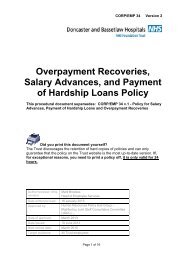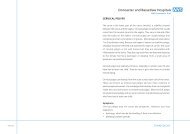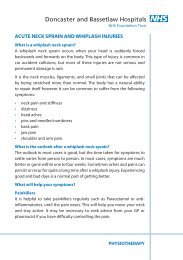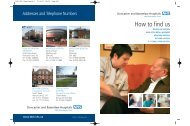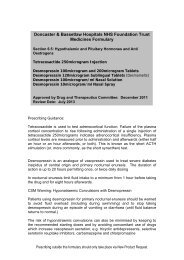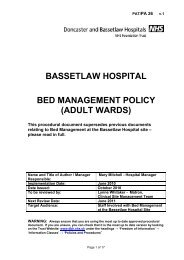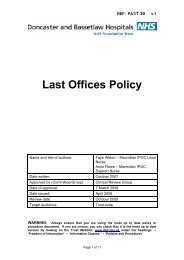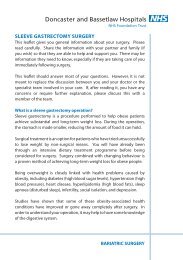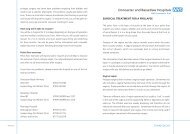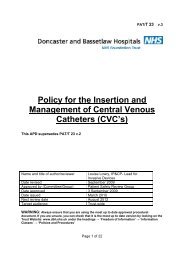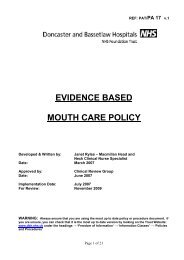VARIANT CREUTZFELDT-JAKOB DISEASE (vCJD) AND ...
VARIANT CREUTZFELDT-JAKOB DISEASE (vCJD) AND ...
VARIANT CREUTZFELDT-JAKOB DISEASE (vCJD) AND ...
You also want an ePaper? Increase the reach of your titles
YUMPU automatically turns print PDFs into web optimized ePapers that Google loves.
PAT/IC 4 v.3<br />
Patients should be assessed for risk of CJD or <strong>vCJD</strong> before elective or emergency surgery<br />
– as above.<br />
NICE guidance http://www.nice.org.uk/nicemedia/pdf/ip/IPG196guidance.pdf. states that<br />
for high risk surgical procedures:<br />
• Steps should be taken to ensure that instruments that come into contact with high risk<br />
tissues do not move from one set to another.<br />
• Supplementary instruments that come into contact with high risk tissues should either<br />
be single-use or should remain with the set to which they have been introduced.<br />
• A separate pool of new neuroendoscopes and reusable surgical instruments for high<br />
risk procedures should be used for children born since 1 January 1997 and who have<br />
not previously undergone high risk procedures.<br />
For further advice on handling of instruments used in posterior segment eye surgery see<br />
“Transmissible spongiform encephalopathy agents : Safe working and the prevention of<br />
infection” – Annex L.<br />
The use of single use instruments (eg tonometer prisms) or contact lenses is<br />
recommended for use on those designated “at increased risk” of CJD or <strong>vCJD</strong>. The<br />
practice of single-use instruments or contact lenses for examination should be encouraged<br />
for other patients where cost and quality are acceptable. If re-usable instruments or contact<br />
lenses are used, it is imperative that they are cleaned and decontaminated in an<br />
acceptable and consistent way, in accordance with “Transmission spongiform<br />
encephalopathy agents : safe working and the prevention of infection” - Annex L. The<br />
practice of decontaminanting tonometers with alcohol wipes is not sufficient and may, in<br />
fact, fix prion material to the surface of the instrument.<br />
vi)<br />
Use of laser for tonsillectomy smoke plumes<br />
Some ENT surgeons may use laser techniques for tonsillectomy. There is no evidence of<br />
transmission of TSEs by the respiratory route. Any risk from smoke plumes is thought to be<br />
very low, but there are no data on <strong>vCJD</strong>.<br />
vii)<br />
Decontamination of Endoscopes<br />
The general procedures set out in MDA Device Bulletin MDA DB2002(05) and BSG<br />
Guidelines for Decontamination of Endoscopes for Gastrointestinal Endoscopy 2008,<br />
should be followed. Additional precautions for the decontamination of flexible endoscopes<br />
used in all patients with, or at risk of, CJD/<strong>vCJD</strong> (see Table 1) are recommended.<br />
Channel cleaning brushes and, if a biopsy has been taken, the valve on the<br />
biopsy/instrument channel port should be disposed of as clinical waste after each use.<br />
Single-use (disposable) biopsy forceps should be used routinely in all patients. The MDA<br />
Bulletin and BSG guidelines advice that endoscope accessories should be single-use<br />
wherever possible. It is essential to have systems that enable endoscopes, together with<br />
Page 17 of 22



